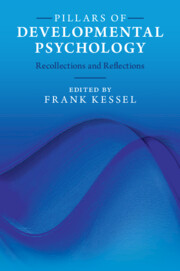Refine search
Actions for selected content:
143 results
Facts and Norms in Democratization
-
- Journal:
- Democratic Theory / Volume 4 / Issue 2 / December 2017
- Published online by Cambridge University Press:
- 01 January 2026, pp. 27-48
-
- Article
- Export citation
Degrees of Disciplinarity in Comparative Politics: Interdisciplinarity, Multidisciplinarity and Borrowing
- Part of
-
- Journal:
- European Political Science / Volume 8 / Issue 1 / March 2009
- Published online by Cambridge University Press:
- 01 January 2026, pp. 26-36
-
- Article
- Export citation
Interdisciplinarity and International Relations
- Part of
-
- Journal:
- European Political Science / Volume 8 / Issue 1 / March 2009
- Published online by Cambridge University Press:
- 01 January 2026, pp. 16-25
-
- Article
- Export citation
Interdisciplinarity and the Study of Politics
- Part of
-
- Journal:
- European Political Science / Volume 8 / Issue 1 / March 2009
- Published online by Cambridge University Press:
- 01 January 2026, pp. 4-15
-
- Article
- Export citation
What can Interdisciplinarity Offer to Policy Problems? Understanding the Public Policy of Obesity
- Part of
-
- Journal:
- European Political Science / Volume 8 / Issue 1 / March 2009
- Published online by Cambridge University Press:
- 01 January 2026, pp. 47-56
-
- Article
- Export citation
Contradictions of the Bologna Process: Academic Excellence Versus Political Obsessions
- Part of
-
- Journal:
- European Political Science / Volume 12 / Issue 4 / December 2013
- Published online by Cambridge University Press:
- 01 January 2026, pp. 440-447
-
- Article
- Export citation
AI, interdisciplinarity and civic engagement: insights from Amsterdam school choice
- Part of
-
- Journal:
- Cambridge Forum on AI: Culture and Society / Volume 1 / 2025
- Published online by Cambridge University Press:
- 12 November 2025, e5
-
- Article
-
- You have access
- Open access
- HTML
- Export citation
Barriers and Enablers of Interdisciplinary Climate Education: Insights From Secondary Teachers
-
- Journal:
- Australian Journal of Environmental Education , First View
- Published online by Cambridge University Press:
- 05 November 2025, pp. 1-18
-
- Article
-
- You have access
- Open access
- HTML
- Export citation
Handling the hype: Demystifying artificial intelligence for memory studies
- Part of
-
- Journal:
- Memory, Mind & Media / Volume 4 / 2025
- Published online by Cambridge University Press:
- 27 October 2025, e18
-
- Article
-
- You have access
- Open access
- HTML
- Export citation
AI interdisciplinarity as critical technical practice
- Part of
-
- Journal:
- Cambridge Forum on AI: Culture and Society / Volume 1 / 2025
- Published online by Cambridge University Press:
- 23 October 2025, e2
-
- Article
-
- You have access
- Open access
- HTML
- Export citation
1 - Prolegomena to a Legal Theory of International Organizations
-
- Book:
- A Theory of International Organizations in Public International Law
- Published online:
- 26 September 2025
- Print publication:
- 16 October 2025, pp 21-36
-
- Chapter
- Export citation

The Cambridge Handbook of One Health and the Law
- Existing Frameworks, Intersections and Future Pathways
-
- Published online:
- 25 September 2025
- Print publication:
- 09 October 2025
Deconstructing notions of morphological ‘complexity’: Lessons from creoles and sign languages
-
- Journal:
- Journal of Linguistics , First View
- Published online by Cambridge University Press:
- 12 September 2025, pp. 1-31
-
- Article
-
- You have access
- Open access
- HTML
- Export citation
1 - Persuasion and Influence in Linguistic Research
- from I - (Re)framing Persuasion
-
-
- Book:
- Manipulation, Influence and Deception
- Published online:
- 10 June 2025
- Print publication:
- 24 April 2025, pp 3-18
-
- Chapter
- Export citation
Chapter 29 - Touchstones and Sightings
-
-
- Book:
- Pillars of Developmental Psychology
- Published online:
- 14 February 2025
- Print publication:
- 20 February 2025, pp 327-336
-
- Chapter
- Export citation

Pillars of Developmental Psychology
- Recollections and Reflections
-
- Published online:
- 14 February 2025
- Print publication:
- 20 February 2025
Extinction studies in focus: Reflections on photography at a time of ecological decline
-
- Journal:
- Cambridge Prisms: Extinction / Volume 3 / 2025
- Published online by Cambridge University Press:
- 12 February 2025, e2
-
- Article
-
- You have access
- Open access
- HTML
- Export citation
Knowledge and perceptions of the southern river otter (Lontra provocax), an elusive endangered species in Tierra del Fuego (Argentina)
-
- Journal:
- Environmental Conservation / Volume 52 / Issue 1 / March 2025
- Published online by Cambridge University Press:
- 07 February 2025, pp. 50-56
-
- Article
- Export citation
1 - Hard Binaries and Their Discontents
- from Part I - Theory
-
- Book:
- Contesting Pluralism(s)
- Published online:
- 19 December 2024
- Print publication:
- 02 January 2025, pp 5-29
-
- Chapter
- Export citation
